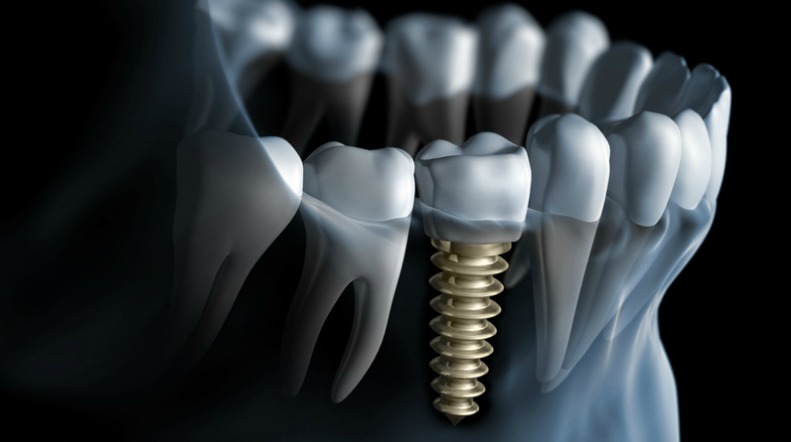There are often a lot of confusing dental and medical terms that are used around the process of getting a dental implant placed. One of the most common words is “osteointegration” or sometimes called “Osseointegration.” Both mean the same thing: the connection between living bone tissue and the surface of an implant.
When it comes to dental implants, osteointegration is an absolute necessity for a successful implant procedure. The purpose of a dental implant is to replace a missing tooth as close as possible to its natural state. This means that the titanium metal post that is used to set the implant into the jaw not only old the implant in place but actually have the bone grow around it! Your dental implant essentially acts like the missing tooth, replacing it almost perfectly.
How Dental Implants Work
Before going further, it is important to have a good idea of how the implant procedure generally works.
The surgery itself is generally an outpatient surgery performed in the following stages. First, the damaged tooth or teeth is removed. Then, your jawbone is prepared for surgery, which may involve bone grafting if your jaw isn’t thick or is too soft. The reason for a graft is because the chewing action of your mouth is incredibly powerful, and if your jaw cannot support the implant, it will very likely fail.
After your jawbone heals from the bone grafting surgery, which may take several months, the dentist will place the meal implant post into your jawbone. Next comes a healing period can last many months. This healing process is not only to make sure that the body recovers from the surgery but also so that the jawbone can grow around the implant.
It is this healing period in which osteointegration takes place as the implant integrates with the bone. How successfully the implant does so is determined by your dentist. Generally, if the implant exhibits mechanical stability, or resists forces and pressures acting on it, then it is integrated. This kind of connection has greatly enhanced every aspect of applied prosthetics and implants.
After the bone has been given several months to grow around the implant, the oral surgeon places the abutment. he abutment is the part of the implant which allows the tooth to be placed. In some cases, if the jaw is strong enough and the implant is very stable the abutment can be attached at the same time as the implant is placed.
Finally, after the soft tissue heals, you will have molds of your teeth and jawbone taken, for the creation of the new tooth. Then, the tooth or teeth is placed. The process takes many months, most of which are devoted to recovery and healing.
It is not uncommon for you to experience some discomfort associated with any type of dental surgery that can include: swelling of the gums and face, bruising of your skin and of your gums, pain at the implant site, and minor bleeding. Your dentist may prescribe you pain medication in order to help manage the pain.
If the swelling or if the discomfort gets worse in the days following the surgery, or if there is any other problem, contact your oral surgeon. They may prescribe you different pain medication or antibiotics. You will also have to stick to soft foods for a while while the site of the surgery heals. If stitches are used, they are usually self-dissolving, but your doctor may need to remove your stitches.
After the surgery, be sure to practice good dental hygiene by refraining from smoking, practicing excellent oral hygiene. Use a brush with specially designed brushes to clean between the teeth and the sides. Be sure to see a dentist regularly to maintain the health and proper functioning of your implants. Avoid damaging your teeth by using them to chew hard things like ice or hard candy which can break the crowns. Avoid tooth-staining tobacco and caffeine, and if you grind your teeth be sure to get treatment to help prevent it.
Due to the amazing power of a dental implant to integrate into the very jawbone itself, it offers a stable, long-lasting, and durable alternative to dentures, bridges, or other dental work aimed at replacing missing teeth. While the entire procedure may seem very complicated, think of it as in investment in your life-long smile.



